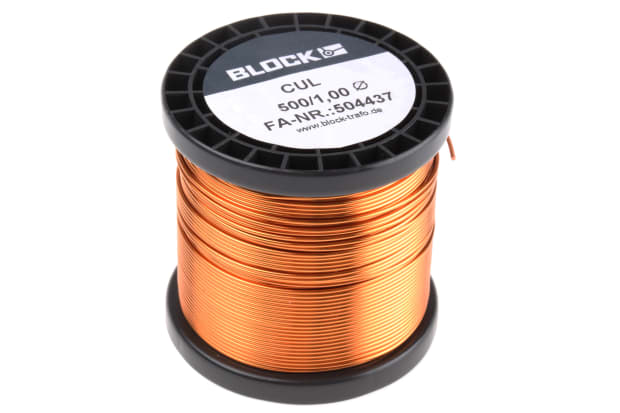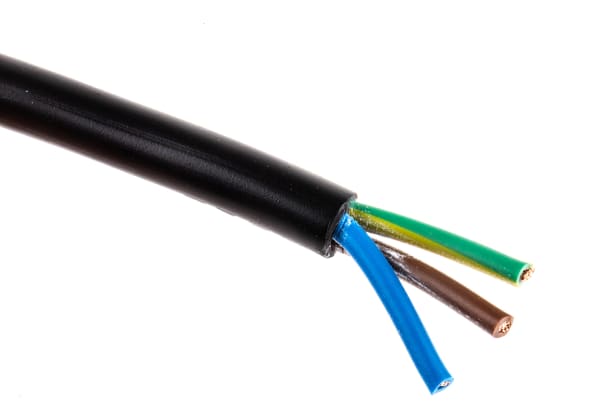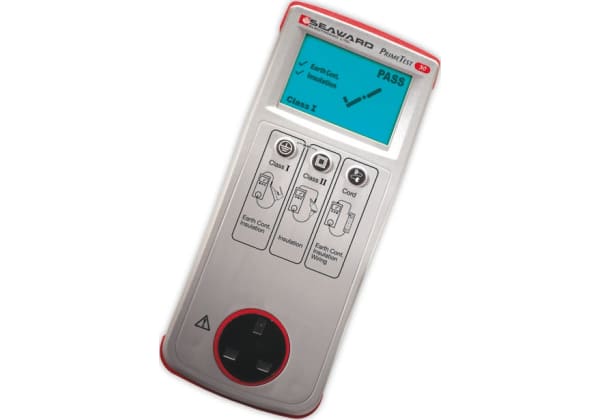- Published 17 Jan 2023
- Last Modified 29 Aug 2023
- 5 min
A Complete Guide to Copper Wire
This guide will cover everything you need to know about copper wire, including what it is, how it's used, and what types are available.

Copper wire is a critical component in the manufacturing of electrical equipment. Whether you're dealing with wiring or power transmission and distribution, you'll need to know how to choose the right kind of copper wire for your needs.
What is Copper Wire?
Copper wire is an electrical conductor that is used in all kinds of electrical applications. It can be found in homes, offices, factories, and other industrial facilities. The conductor is made from either single or multiple strands of pure copper that are insulated with various materials such as polyvinyl chloride (PVC), polyethylene (PE), polypropylene (PP), polyurethane (PUR), or polytetrafluoroethylene (PTFE). This insulation protects against short circuiting and the risk of an electrical fire caused by arcing between wires in a circuit.
Copper is a soft metal that conducts electricity very well, which makes it ideal for use in electrical projects. However, some copper wire may also be made of copper alloys. The most common alloy for electrical wires is tin-plated copper which features higher corrosion resistance than pure, uncoated copper.
Copper wire has a high conductivity rating - about 90% of that of silver - which makes it an ideal material for use in electronics. Copper also has a low resistance compared to other metals like aluminium or steel which makes it ideal for high-powered applications like power lines and low-voltage wiring.
What is Copper Wire Used for?
Copper wire is a popular choice for industrial and commercial electrical applications. It can be used for power transmission, communications and networking, electric motors, lighting, and heating.
Copper wire is used in a wide variety of applications, including:
- Wires for electric motors
- Domestic electrical wiring
- Wires that act as antennas for radio waves
- Power distribution systems in larger facilities such as factories or office buildings
- Electrical circuits within devices such as computers or televisions
Copper wire is used to transmit electric current from one point to another. It can also be used for thermal dissipation, electrical resistance, and heat transfer. The flexibility and strength of copper make it an excellent choice for these applications.
Copper Wire Types
Copper wire also comes in various types and sizes, so it’s helpful to understand what kind will work best for your project. There are many different types of copper wire available, including coated, enamelled, tinned and uncoated solid copper. Each type has its own advantages and disadvantages.
Enamelled Copper Wire
Enamelled copper wire (ECW) has an enamel coating applied to it which makes it more resistant to corrosion. Some types of coated copper such as enamelled wire have an additional layer of insulation between the outer coating and the conductor itself. Some enamelled wires may also contain steel filaments inside them which provide increased strength and flexibility. This type of wire is commonly used in industrial applications where durability is key.
Coated Copper Wire
Coated copper wire (CCW) has a coating applied to it that provides additional properties such as increased corrosion resistance or reduced oxidation during use. Coatings may include tin plating or phosphor bronze plating. Copper wire can also be coated with plastic or vinyl to make it more flexible. This allows it to withstand high temperatures while still maintaining its electrical properties.
Tinned Copper Wire
Tinned copper wire (TCW) has a layer of tin plating applied to its surface which protects against corrosion. Tinned copper wire is coated in a thin layer of tin to prevent oxidation (the process by which oxygen attaches itself to metal). This makes it easier to solder because it prevents oxides from forming on the surface while soldering and protects against corrosion once installed.
Uncoated Copper Wire
Uncoated or bare copper wire does not have any protective coating on it and can oxidize easily when exposed to air or water. This makes it typically unsuitable for use outdoors or in environments where there is a high level of moisture present.
Solid vs Stranded Copper Wire
There are two primary types of conductor - solid and stranded.
Solid Copper Wire
Solid copper wire is made from a single, solid piece of rigid copper. It’s typically used in applications where the wire won’t be bent or flexed frequently. It is also more durable and resistant to corrosion than stranded copper wire.
Stranded Copper Wire
Stranded copper wire consists of multiple small strands of copper that are twisted together to allow for increased flexibility. Stranded copper wire is commonly used for AC power lines and low-voltage power distribution systems.
Copper Wire Sizing
Once you've chosen the right type of copper wire for your project, it's time to size it appropriately! You can do this by measuring AWG (American Wire Gauge) or metric sizing systems such as SWG (Standard Wire Gauge). The AWG system is used in North America, while the metric system is used in most other countries around the world.
When choosing the right size of copper wire for your project, there are several factors to consider. These include:
- Length - The length of the wire will determine how much voltage can be transferred through it. If you need more power, then you should use a thicker wire so that more current can flow through it without overheating and damaging your equipment
- Thickness - The thickness determines how much current can flow through the wire. For instance, a thicker cable will carry more current than a thinner one but will also take up more space which may not be ideal if space is limited
- Voltage - Different types of copper wire have different maximum voltages which means they must be sized appropriately before connecting them to circuits
American Wire Gauge (AWG)
Copper wire can be sized using the American Wire Gauge (AWG) system. AWG size is often used as an indicator of how thick or thin a piece of metal will be when it's rolled into a coil.
This system is based on the diameter of the wire, and each number represents a different range of diameters. The AWG system uses numbers ranging from 1 to 36 to indicate the diameter of an electrical conductor. These numbers represent how many times smaller each successive number is than its predecessor. So, #1 is 10 times smaller than #10, which means it has a cross-sectional area that's 100 times smaller.
Metric Sizing
Copper wire in the UK is typically measured using metric sizes. This system measures by diameter in millimetres or AWG numbers that correspond with their diameters. Metric sizing refers to how many millimetres thick a piece of metal is at its thickest point.
Standard metric sizing for copper wire is also based on the diameter of the wire. However, instead of using a whole number to represent a range of diameters, it uses fractions that are divisible by 10. For example, a 1mm² cable has a diameter of 1 millimetre.
Copper Wire Suppliers
Here are some popular copper wire suppliers in the UK:




